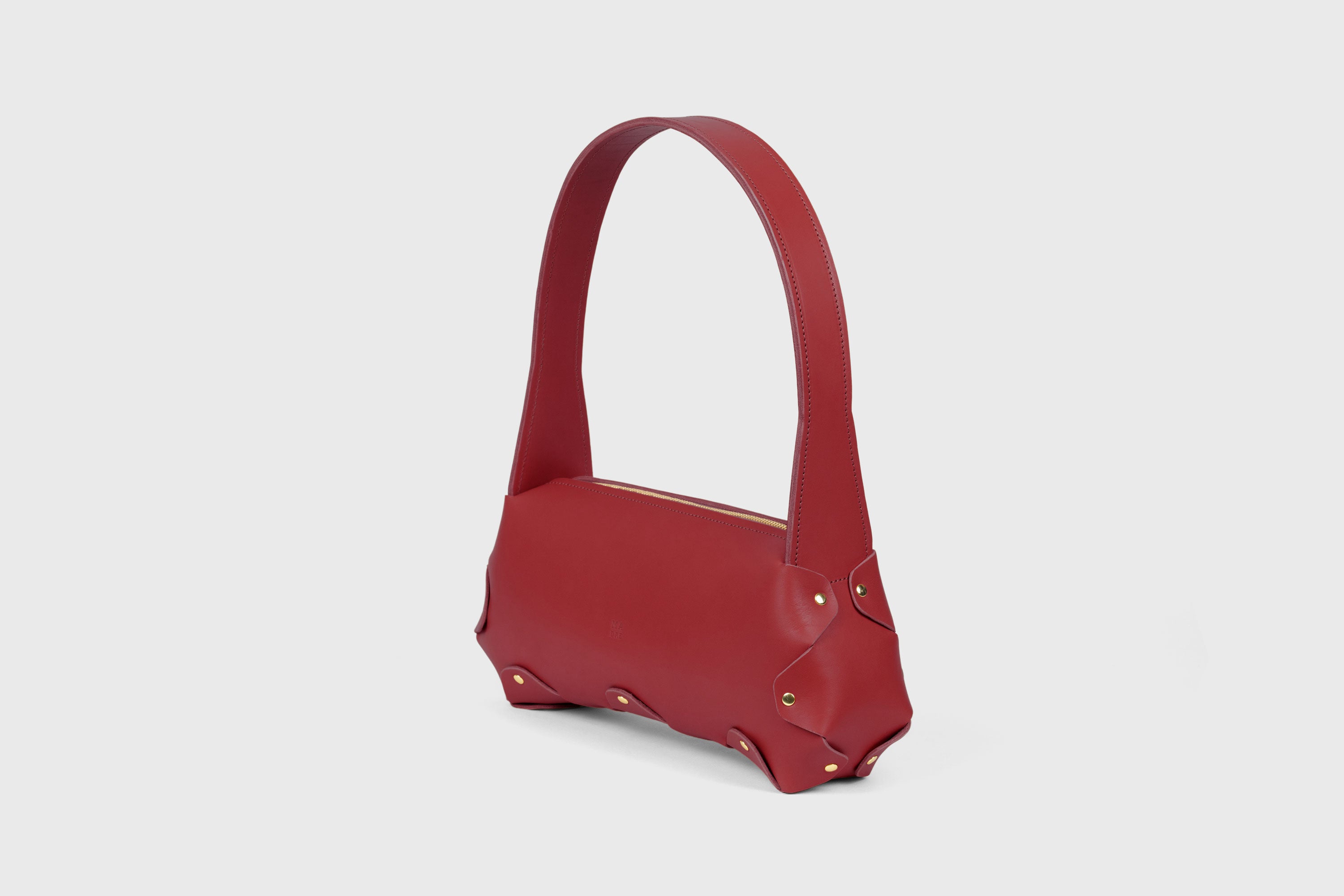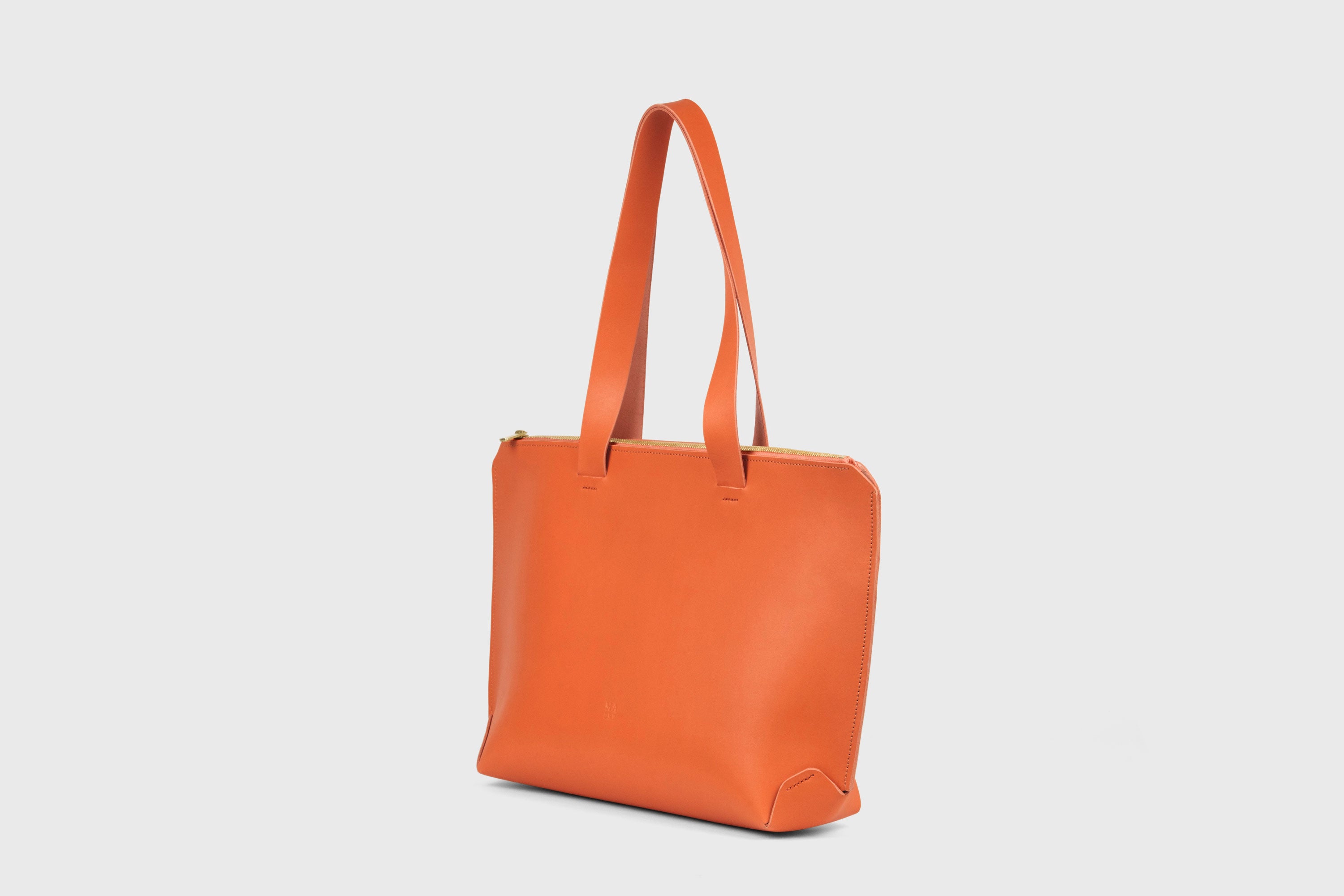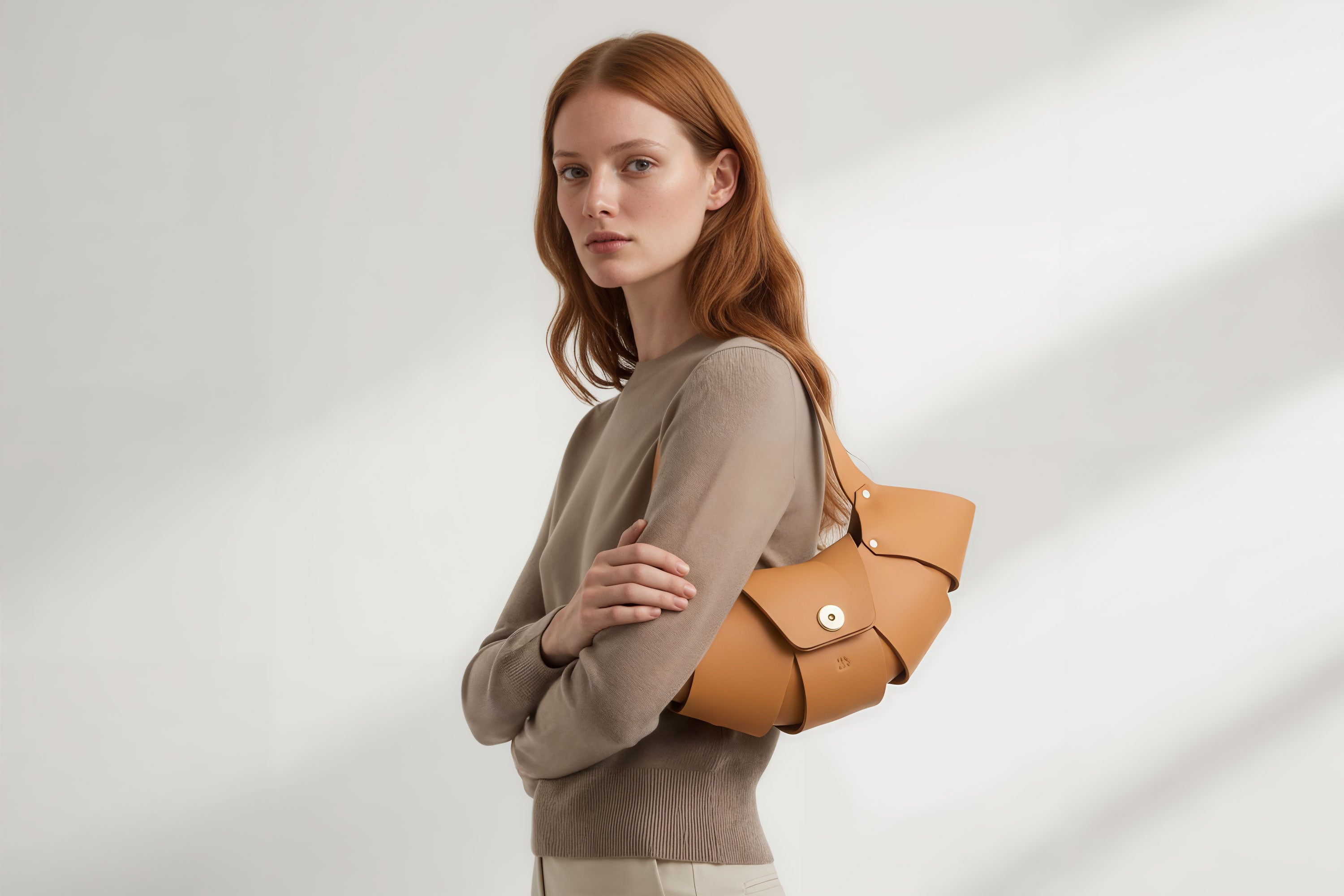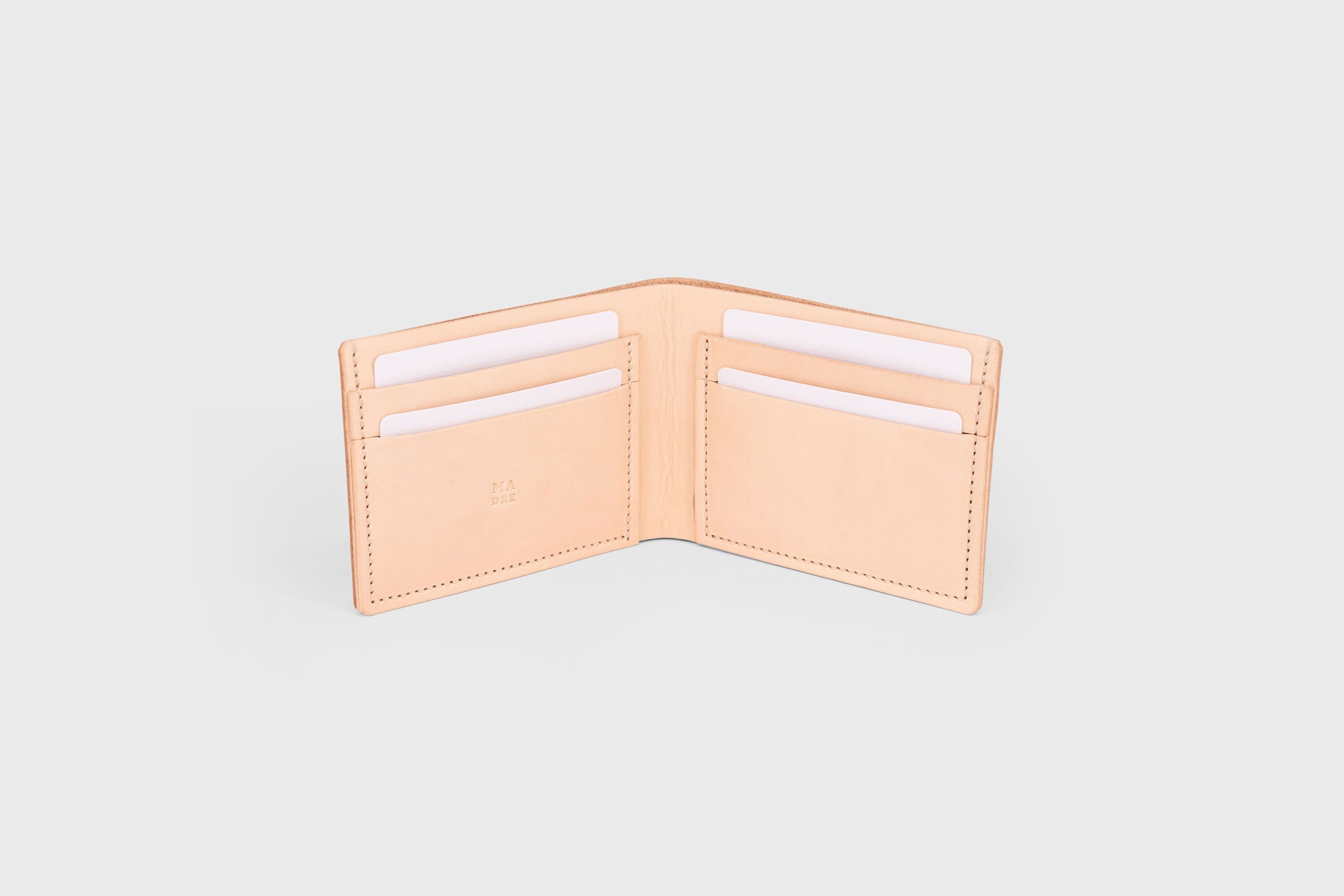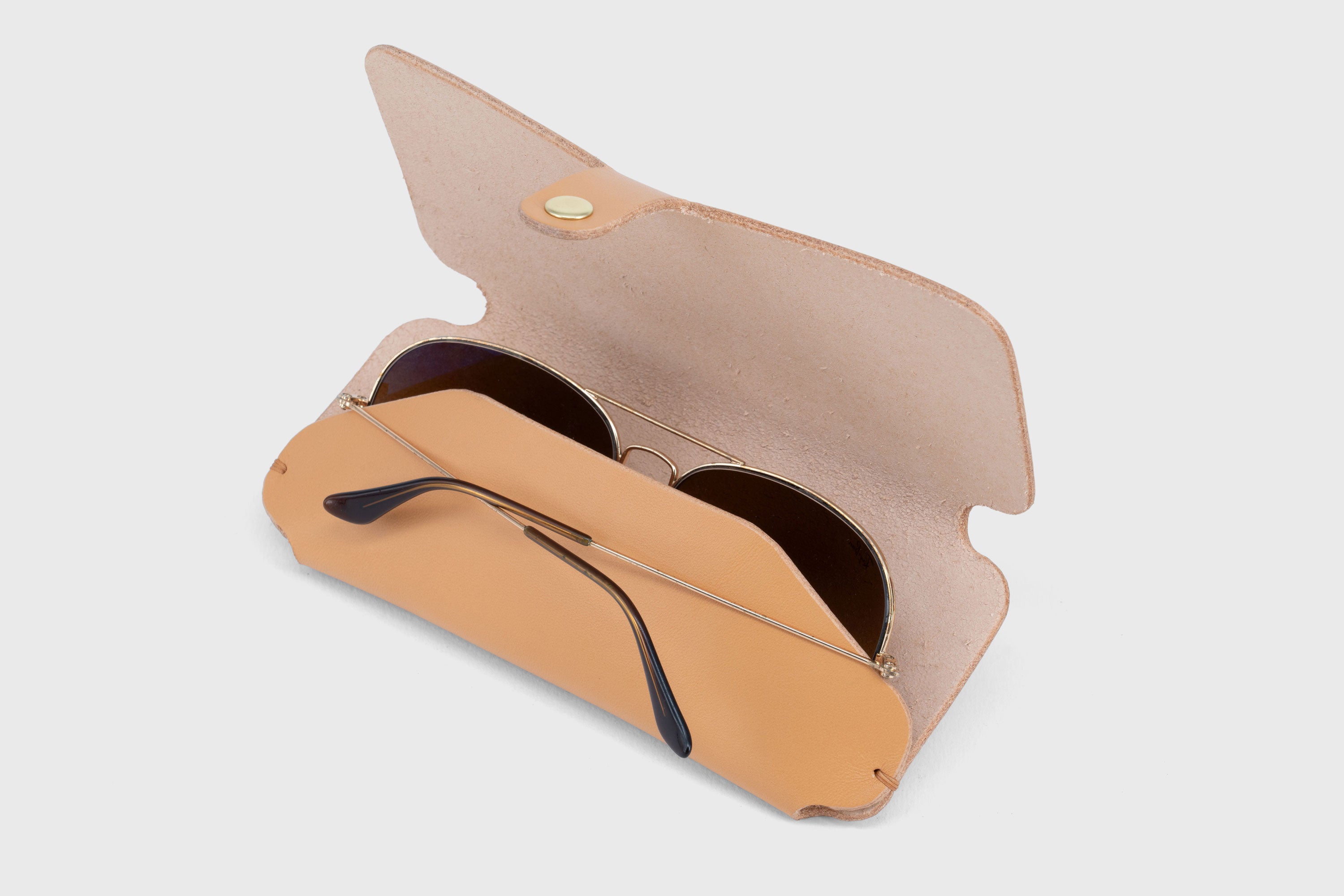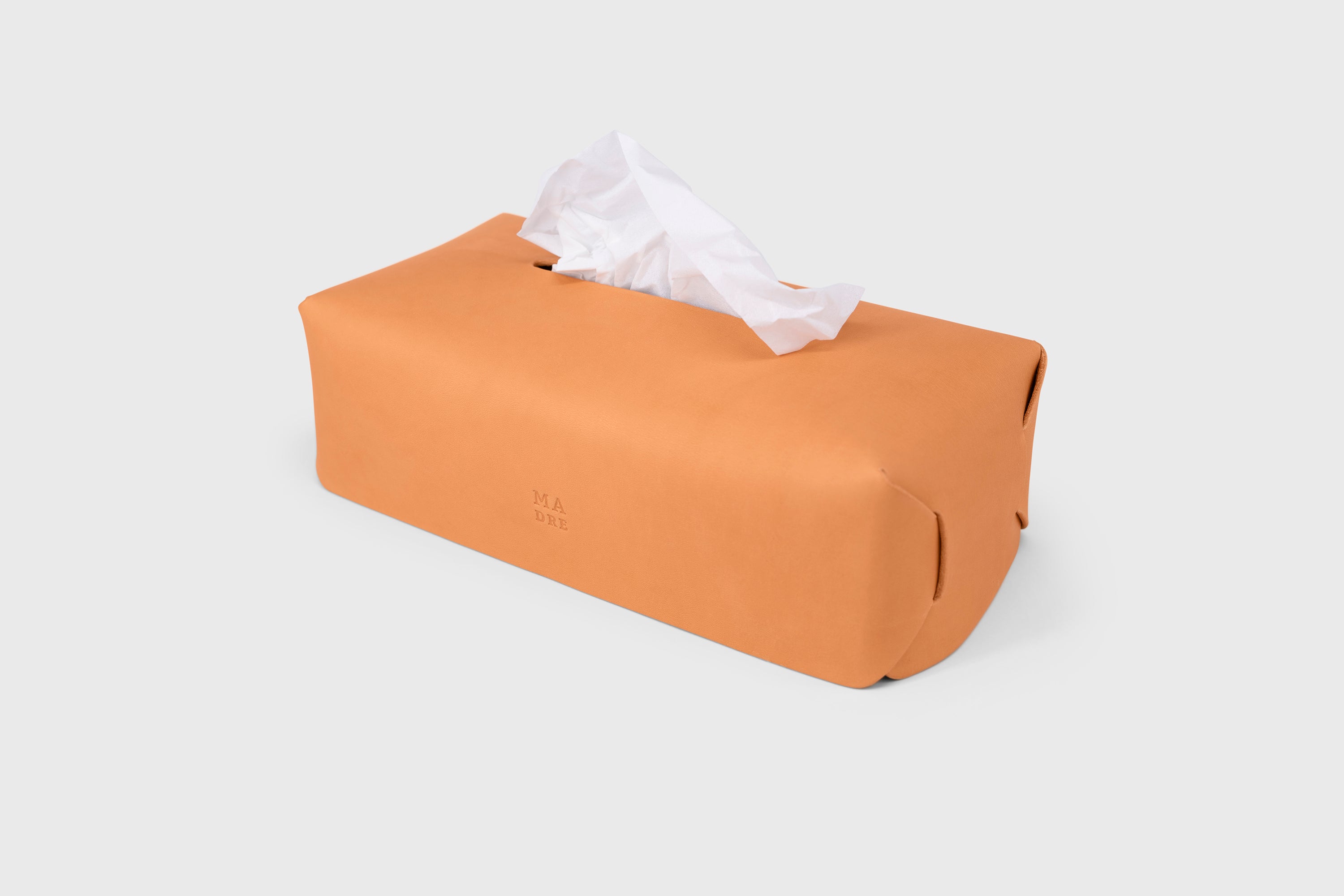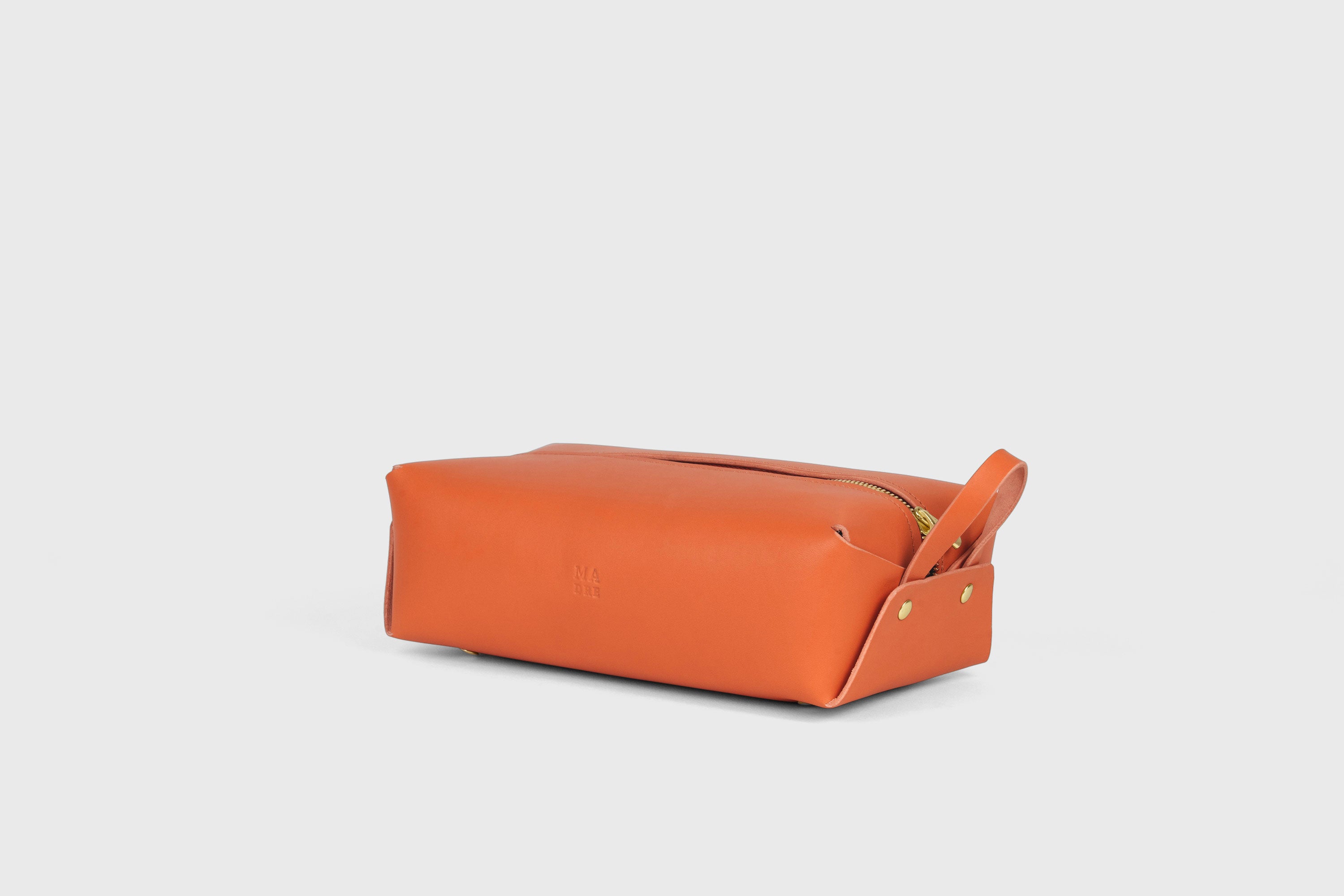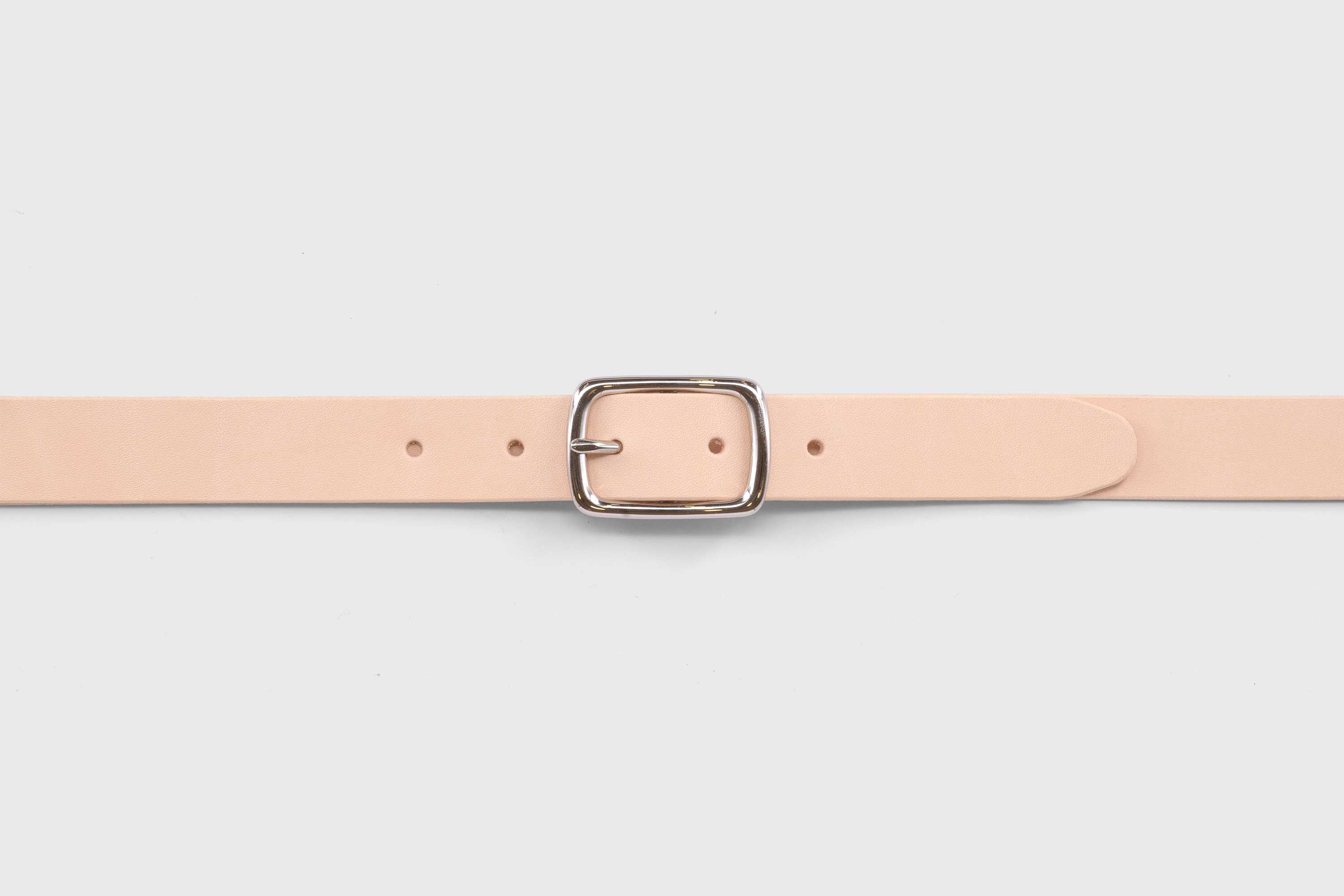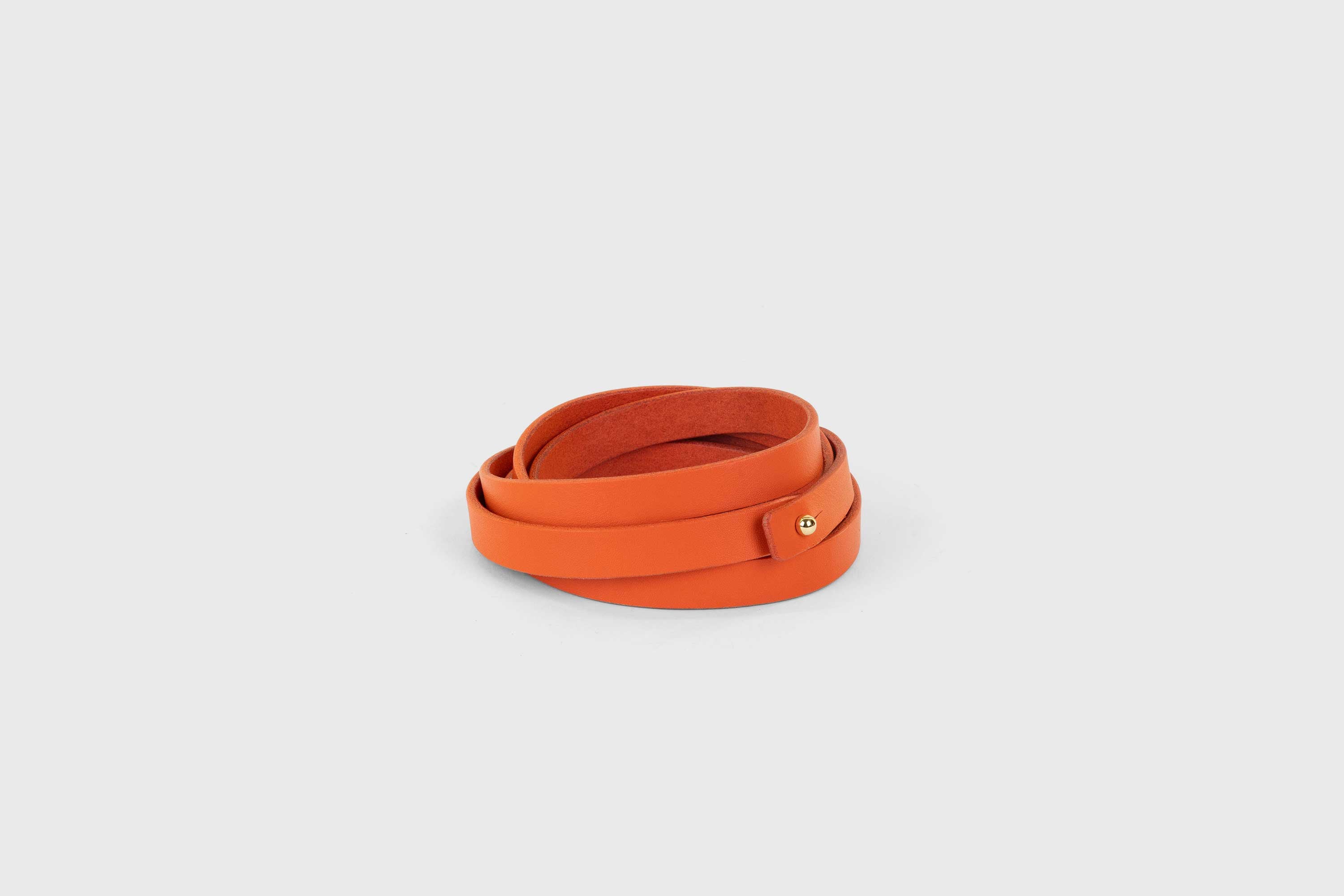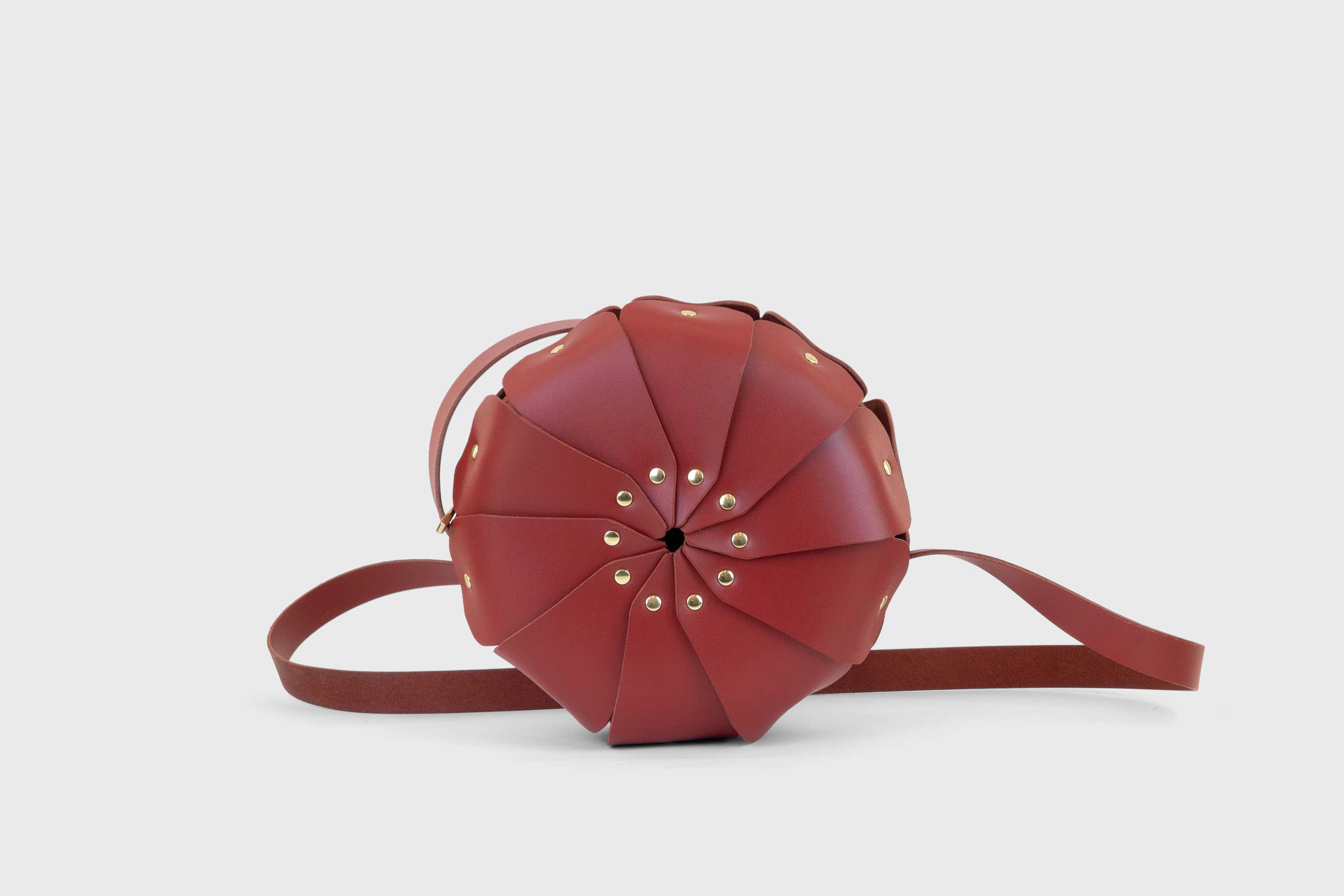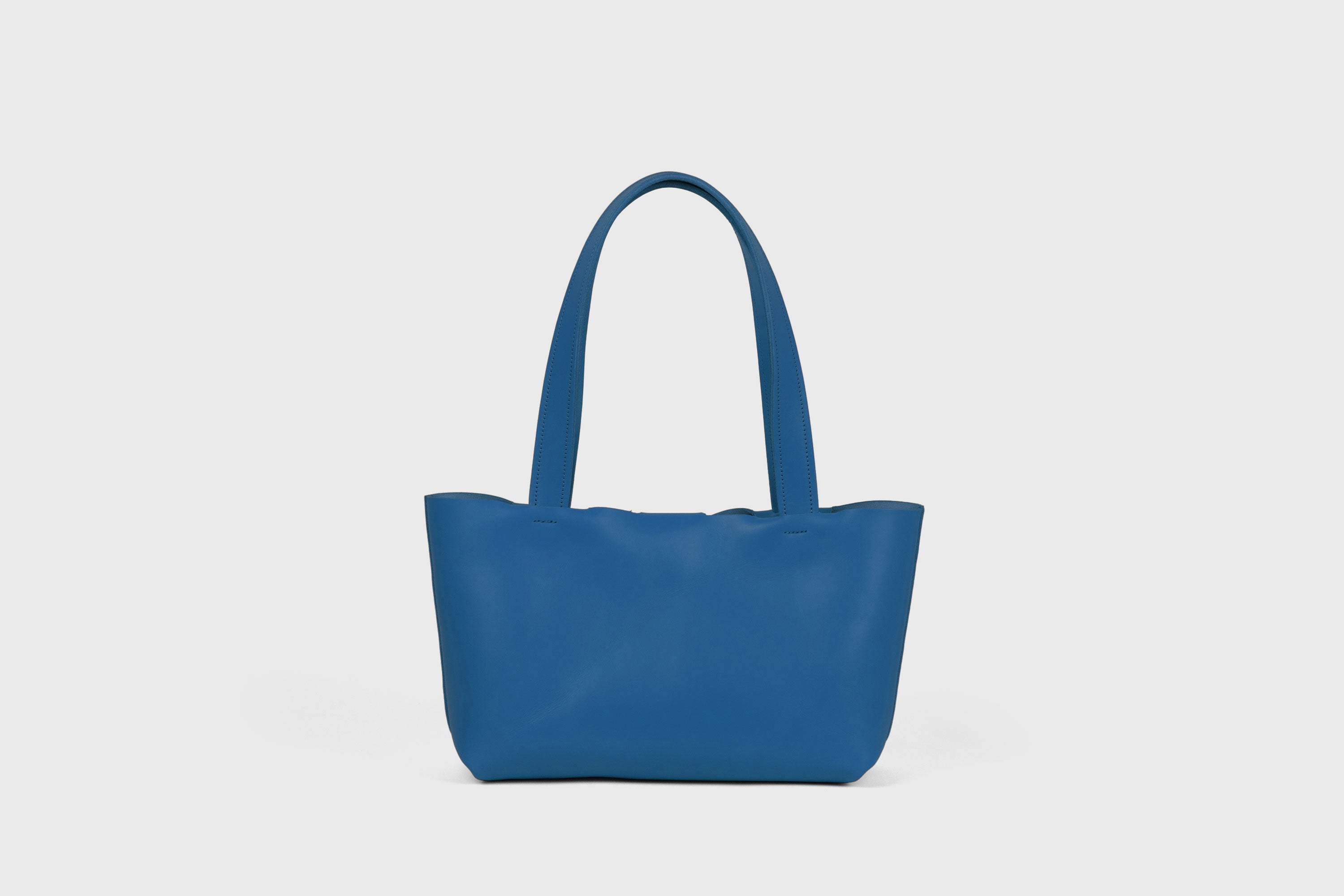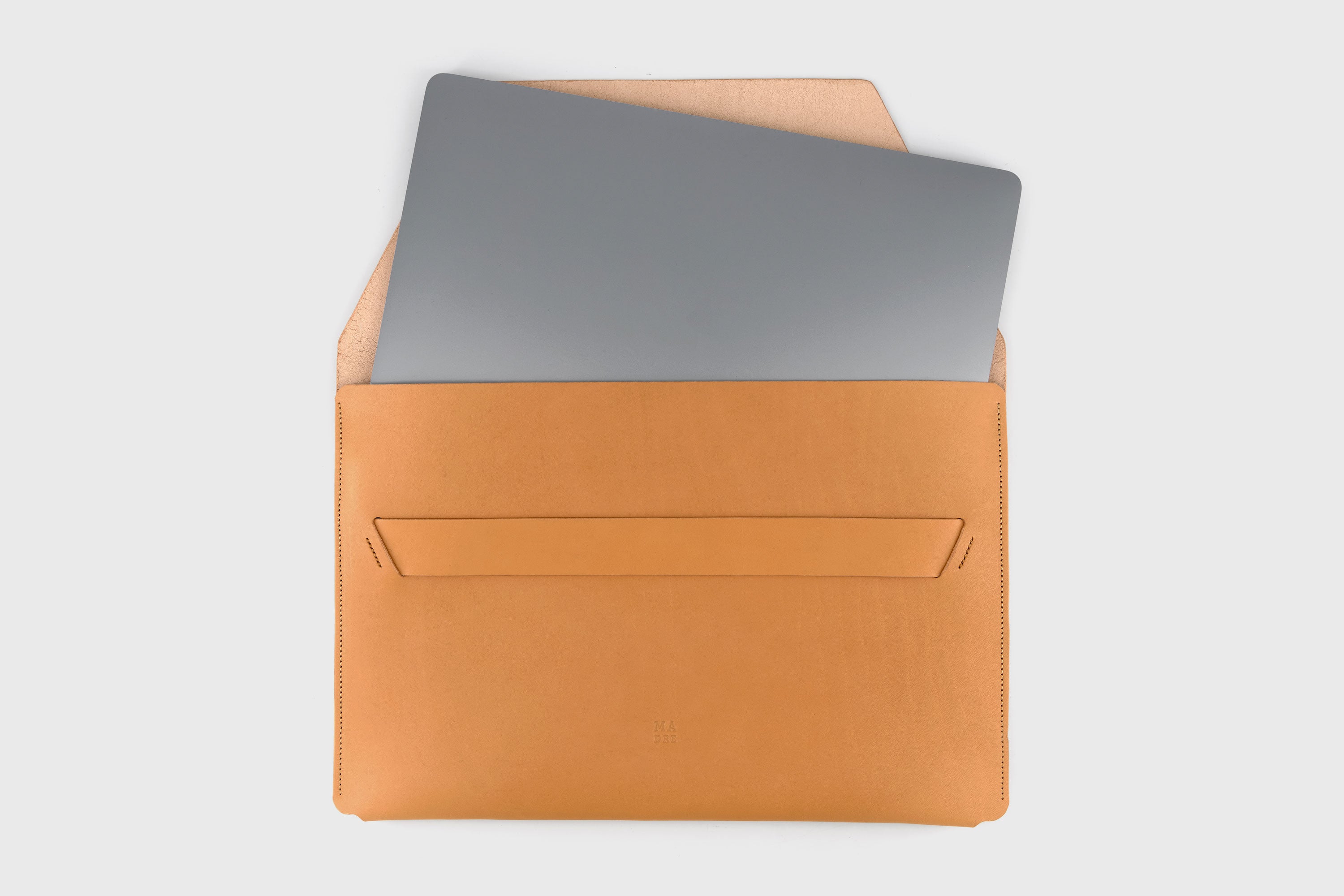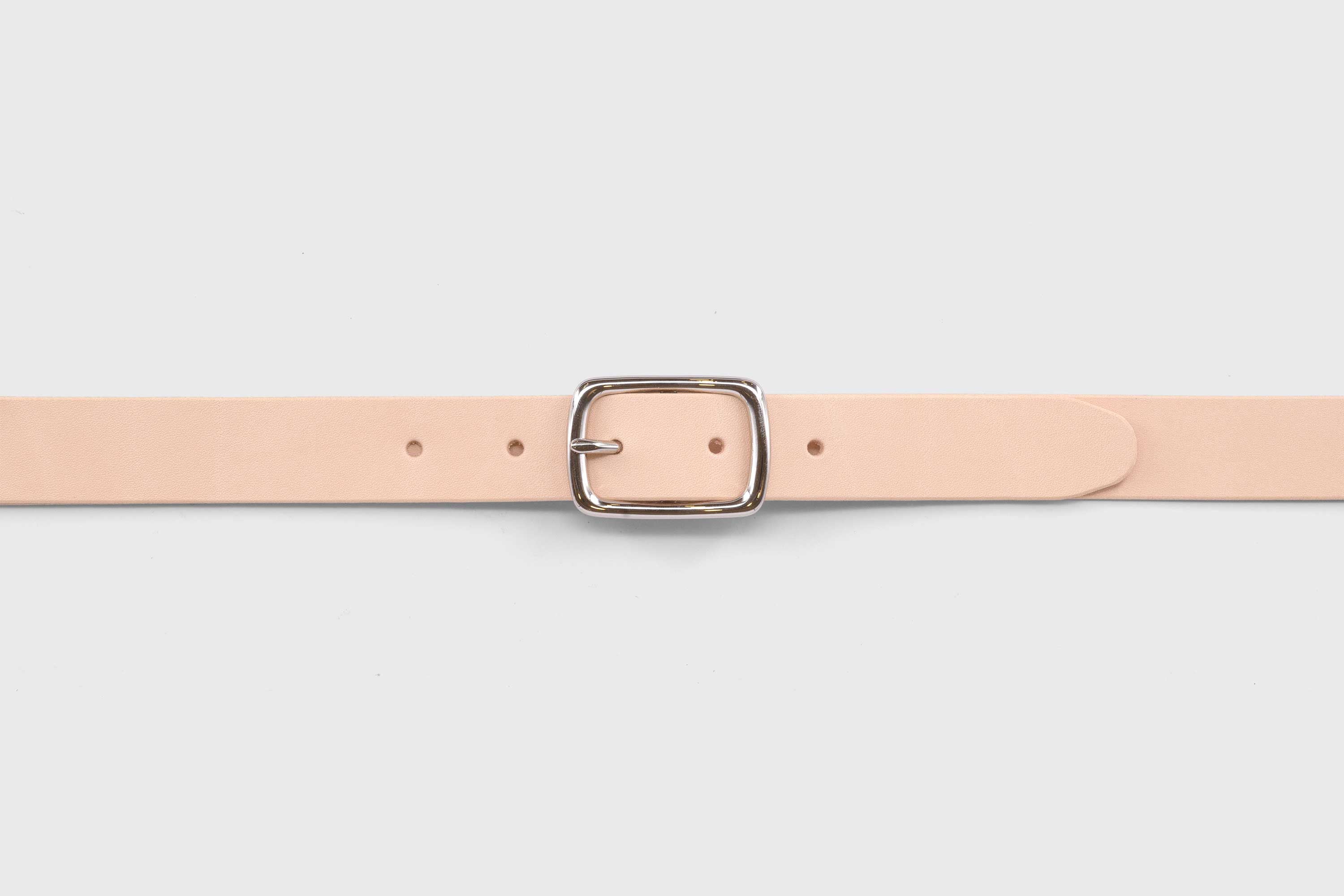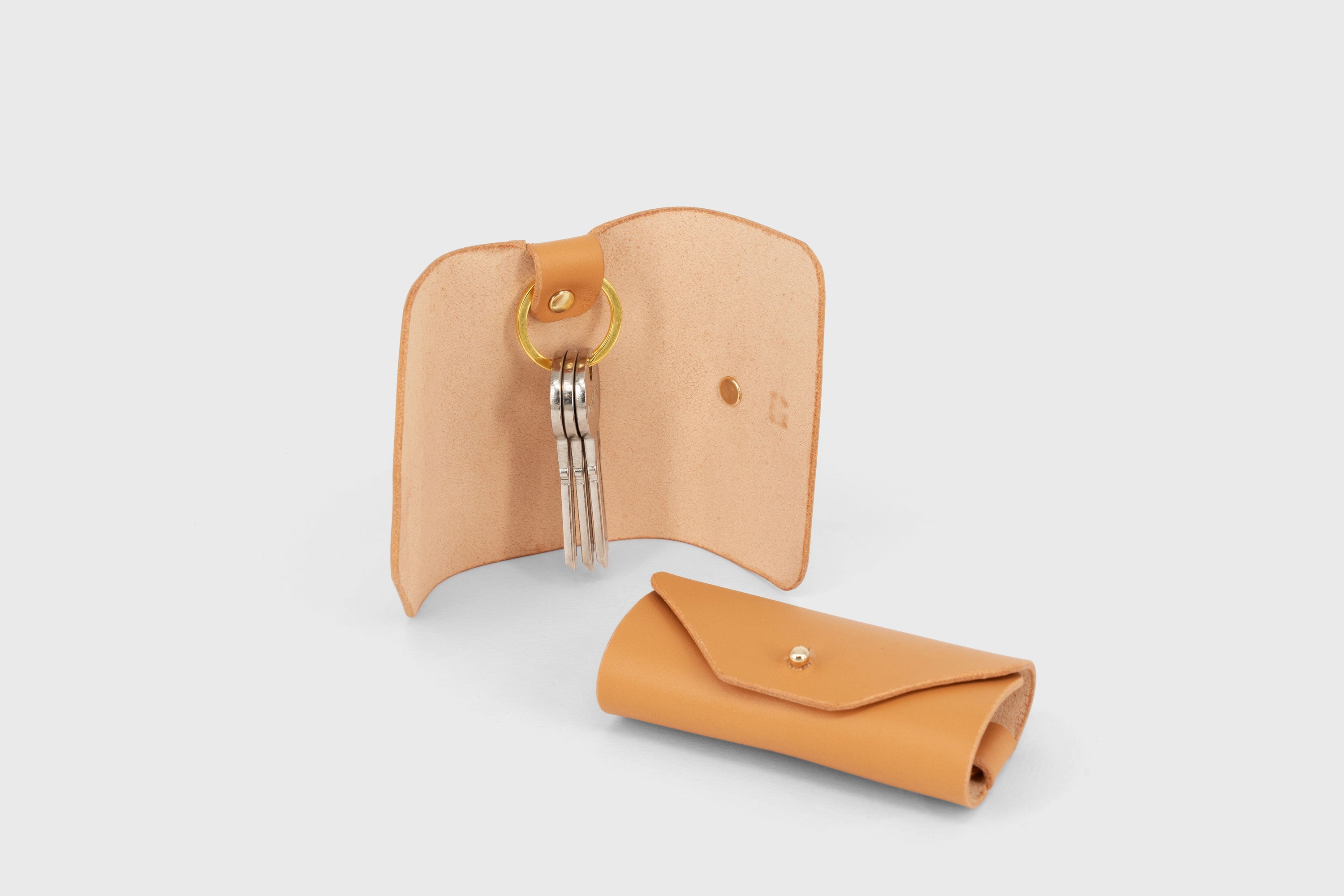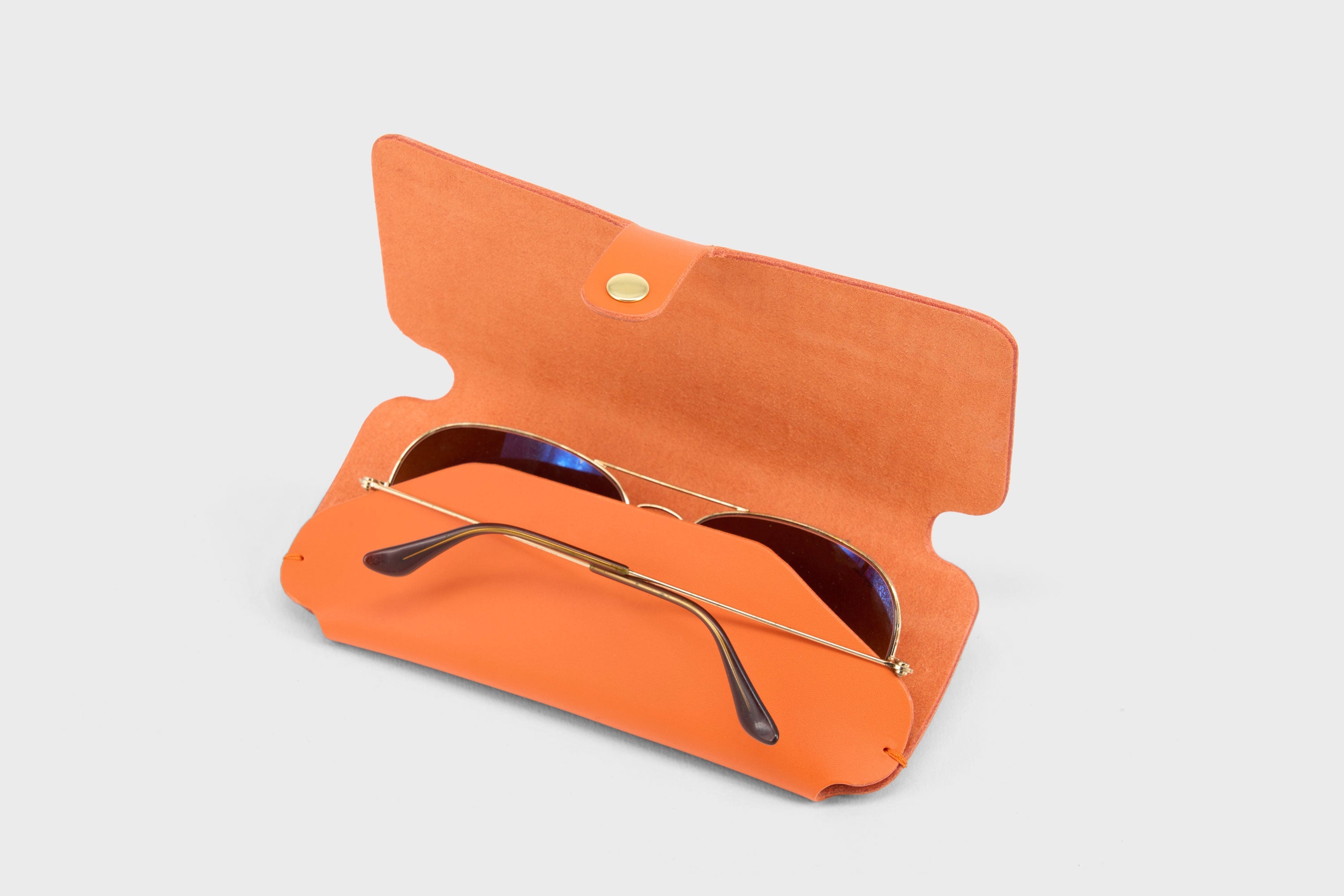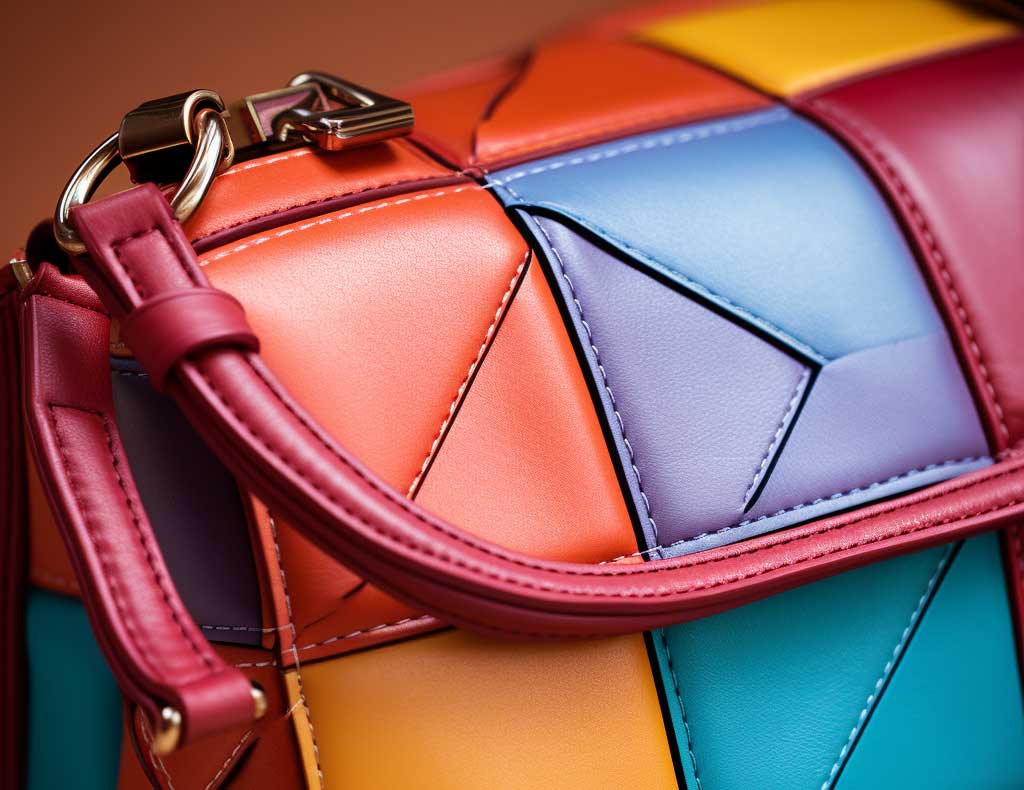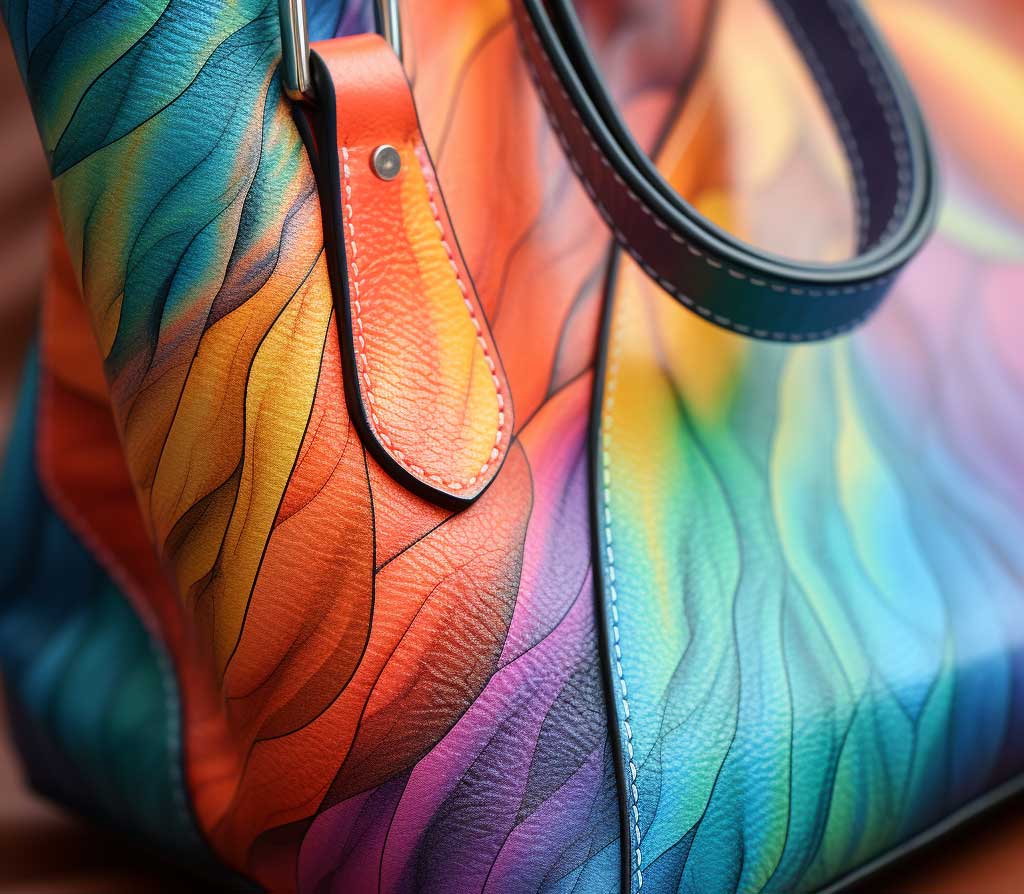
Bonded Leather: Quality, Durability, and Eco-Impact Examined
Bonded leather, also known as reconstituted leather, is a term that's often bandied about in the world of leather goods. Despite its prevalence, there's a lot of confusion about what bonded leather truly is and how it holds up against other types of leather.
At its core, bonded leather is an engineered product. It's made from the scraps and fibres left over from the processing of genuine leather, which are bonded together using polyurethane or latex on top of a fibre sheet. The quantity of real leather in the mix is minimal – typically between 10% to 20%. This process allows manufacturers to use up every bit of the original leather, reducing waste.
However, it's important to note that despite having 'leather' in its name, bonded leather significantly differs from other leather types. Its appearance, feel, durability, and overall quality don't quite match up to those of genuine, full grain or top grain leather – something we'll delve into more as we move along.
As we lift the veil off bonded leather, we hope to provide you with all the necessary information to make informed decisions when it comes to choosing leather goods. Understanding these differences will make clear why we, at Atelier Madre, have chosen to work with full grain vegetable-tanned leather for our products.
The Characteristics of Bonded Leather: An Overview
Just as with any material, bonded leather has distinct characteristics that set it apart from other types of leather. These characteristics are mainly influenced by its unique production process and material composition.
Texture and Appearance: On the surface, bonded leather can mimic the look of genuine leather to the untrained eye. This is due to the fact that patterns resembling natural leather grain can be imprinted on the material during manufacturing. However, the feel can significantly differ. Bonded leather tends to lack the unique texture and richness that comes with genuine leather. Its surface is often more plastic-like, lacking the supple, organic feel of genuine leather products.
Durability: Bonded leather doesn’t offer the same level of durability as full grain or top grain leathers. Over time, it's more likely to peel, crack, or fade due to the synthetic materials used in its construction.
Consistency: One aspect where bonded leather excels is consistency. Given it’s man-made, it can be produced with uniform color and texture, which may be beneficial in certain applications.
Price: Bonded leather is typically less expensive than other types of leather due to its lower production costs. While this may seem like an advantage, it's important to consider that the lower upfront cost might be offset by reduced longevity and the possible need for replacement earlier than expected.
Despite these characteristics, it's worth noting that bonded leather isn't the top choice for high-quality, long-lasting leather goods. While it may serve certain uses well, it falls short when compared to the likes of full grain vegetable-tanned leather, which we at Atelier Madre, prefer for our products. We'll delve into the reasons for this preference as we explore more about these two materials.
Is Bonded Leather Real Leather?
In the realm of leather goods, definitions matter. Technically, bonded leather contains real leather, but it constitutes a very small fraction (10-20%) of the overall product. The rest (80-90%) is made up of synthetic materials, primarily a binding agent like polyurethane.
As such, bonded leather doesn't possess the same characteristics as real, full-grain leather. It doesn't have the same durability, breathability, or ageing properties. Over time, bonded leather tends to peel and crack, unlike genuine leather which develops a patina and can last for decades if properly cared for.
Therefore, although bonded leather contains a small amount of genuine leather, in the context of quality and longevity that matters to leather goods connoisseurs, bonded leather is not considered real leather. At Atelier Madre, we use only genuine, full-grain, vegetable-tanned leather in our products to ensure the highest quality and durability.
The In-depth Process of Bonded Leather Production
Bonded leather is quite different from traditional, full-grain leather. Often referred to as "reconstituted" or "blended" leather, it's a man-made material that utilizes leather scraps. Here's a more comprehensive look into its production process:
1. Collection of Scraps: The first step in the production of bonded leather is the gathering of leftover scraps. These pieces are often remnants from the cutting process of larger leather products. They can come from a variety of sources, and there can be significant variation in the quality of the scraps collected. In some cases, manufacturers may also add other fibrous materials to the mix.
2. Pulverizing: The collected leather scraps are then shredded or pulverized until they become small, fibrous particles. The exact size can vary, but the aim is to create a fine, uniform material similar in texture to paper pulp.
3. Bonding: The finely shredded leather is then mixed with a binding agent. Polyurethane or latex is commonly used for this purpose. These binding agents serve to glue the shredded pieces together, forming a kind of 'leather pulp.' Sometimes, this pulp may also be mixed with additional chemicals to aid in the binding process and enhance the finished product's durability.
4. Extrusion and Backing: The 'leather pulp' is then spread onto a backing material. This could be a fiber cloth, paper, or another material that can support the bonded leather as it forms. The pulp is spread into thin sheets using an extrusion process. This results in large sheets of bonded leather material.
5. Embossing: Once the sheets have been created, they are then embossed with a texture to mimic the look of genuine leather grain. This process uses heat and pressure, utilizing plates or rollers that have been engraved with a leather-like texture.
6. Coloring and Finishing: The final stages of bonded leather production involve the application of dyes and finishes. These are used to give the bonded leather the desired color and sheen. The sheets may go through several coating processes, with each layer serving a specific purpose such as enhancing the texture, color, durability, or resistance to water and UV rays.
Despite the use of real leather scraps, it's crucial to understand that the end product, bonded leather, does not possess the same quality, longevity, or feel of full-grain leather. It's a lower-cost alternative that makes use of otherwise discarded materials, but at the expense of durability and luxury feel. That's why Atelier Madre steadfastly chooses full grain vegetable-tanned leather, ensuring our products offer both quality and sustainability.
Why Bonded Leather Lacks Durability: An In-depth Explanation
The durability of a material often depends on its structure, and in the case of bonded leather, its structure is inherently less stable and resilient compared to full-grain leather. Here are the key reasons why bonded leather is less durable:
1. Composite Material: Bonded leather is a composite material, which means it's composed of multiple layers. These layers can separate over time, especially with frequent use or exposure to harsh conditions. This is known as delamination, and it's a common issue with bonded leather products.
2. Quality of Raw Materials: Bonded leather is made from leather scraps that have been ground up and reformed. These scraps can vary widely in terms of quality, which can affect the overall durability of the finished product. Additionally, because these pieces are so small, they don't have the natural fibrous structure of full-grain leather that contributes to strength and longevity.
3. Binding Agents: The use of binding agents, like polyurethane or latex, is necessary to hold the small leather particles together. Over time, these agents can break down or become brittle, leading to cracking or peeling in the bonded leather.
4. Less Resistant to Wear and Tear: Unlike full-grain leather, which develops a patina and can become more beautiful with age, bonded leather does not age well. It's more susceptible to scratches, and it can begin to peel and crack after a few years of regular use.
5. Sensitivity to Environmental Conditions: Bonded leather is more sensitive to environmental conditions than full-grain leather. It can react adversely to high humidity, which can cause it to swell or warp. Conversely, in very dry conditions, it can dry out and crack more easily.
6. Production Process: During the production of bonded leather, the material is exposed to high heat and pressure, which can weaken it. Also, some of the chemicals used in the process can be harsh and may degrade the bonded leather over time.
At Atelier Madre, we understand the value of investing in quality materials. That's why we choose to use full grain vegetable-tanned leather in all of our products. This type of leather is known for its superior durability, beauty, and aging characteristics, making it the perfect choice for our high-quality bags and accessories.
The Uses of Bonded Leather: Versatility with Limitations
Bonded leather, with its lower cost and uniform appearance, finds its use in various products and industries. However, its suitability often depends on the durability required by the product. Here are some common applications of bonded leather:
Furniture: Due to its cost-effectiveness and consistent appearance, bonded leather is a popular choice for budget furniture items like sofas, chairs, and ottomans. It can provide a 'leather-look' at a fraction of the cost of genuine leather.
Bookbinding: Bonded leather is frequently used in the binding of books, diaries, and photo albums. Since these items typically face less wear and tear compared to something like a leather bag or a belt, the lesser durability of bonded leather isn't as much of a concern.
Accessories and Small Goods: Wallets, belts, keychains, and similar small-scale items are often made from bonded leather, primarily to keep costs low. However, due to their frequent usage, these items can deteriorate quickly when made from bonded leather.
Automotive Upholstery: Some car manufacturers may opt for bonded leather when providing 'leather' interiors at a lower cost. However, due to heavy usage, these surfaces may crack and peel over time, leading to less-than-ideal longevity.
While bonded leather has its place in the market, when it comes to items that are frequently used and expected to last for years, like quality handbags or belts, it falls short. This is where high-quality materials like full grain vegetable-tanned leather, which we use at Atelier Madre, truly shine. The superior durability, look, and feel of our chosen leather type makes it the ideal choice for products intended to withstand the test of time.
Bonded Leather Composition and Characteristics
Bonded leather is a composite material, made up of varying percentages of genuine leather scraps and a binding agent, typically a form of polyurethane. The exact composition can vary by manufacturer, but typically it falls within the following ranges:
1. Leather Scraps (10%-20%):
These are leftovers from the processing of genuine leather, ground into a fine dust. These scraps provide the basic leather texture and a small degree of strength to the bonded leather. However, as they're shredded and lack the fibrous strength of full grain leather, they don't contribute significantly to durability.
2. Polyurethane or Other Binders (80%-90%):
Polyurethane is a type of plastic that serves as the binding agent, essentially the "glue" that holds the leather particles together. It forms the majority of the product and gives the bonded leather its shape and flexibility. It's typically embossed with a leather-like texture to imitate the appearance of genuine leather.
When it comes to the characteristics of these components, the small percentage of leather scraps contributes a faint natural leather scent and a slight textural similarity to genuine leather, both of which can make bonded leather seem more like the real thing at first glance.
However, the majority of the material is the polyurethane binder. As a plastic, it doesn't breathe like natural leather, meaning products made from it can feel hotter and stickier in warm weather. It's also more prone to wear and tear, including cracking and peeling, particularly in areas that see a lot of flex or movement.
Despite the low cost of bonded leather, its low durability and less desirable characteristics make it a less attractive option compared to full-grain or top-grain leather, especially for products like bags and accessories that need to withstand daily use.
At Atelier Madre, we use only full-grain vegetable-tanned leather in our products, ensuring superior durability, comfort, and beauty that will last for years to come.
Rebranding Bonded Leather as Recycled Leather and the Problem of Greenwashing
Rebranding bonded leather as recycled leather is a strategy used by some manufacturers and retailers to make their products seem more environmentally friendly than they actually are. Here's how it works:
Bonded leather is indeed made of recycled leather scraps, and in that sense, calling it "recycled leather" isn't false. However, this term fails to convey the whole truth about the product.
As previously discussed, bonded leather contains only 10-20% leather scraps, with the remaining 80-90% comprised of synthetic materials, primarily polyurethane. Not only does this make the product less durable, but it also raises significant environmental concerns.
Polyurethane is a petroleum-based product. Its production involves non-renewable resources and releases harmful emissions. Moreover, products made from polyurethane are not biodegradable, which means that a bonded leather item will linger in a landfill long after a genuine leather product would have decomposed.
Calling such a product "recycled leather" puts the emphasis on the small amount of recycled content and distracts from the significant environmental drawbacks of the majority of synthetic content. This is a classic example of "greenwashing," a marketing strategy where a company presents its products as more environmentally friendly than they really are.
At Atelier Madre, we stand firmly against such practices. We believe in transparency and integrity in the way we describe our products. We use full-grain vegetable-tanned leather, which is biodegradable and made using processes that are less harmful to the environment. By choosing our products, you can have confidence in the quality of the materials and the ethical stance behind them.
Source of Bonded Leather Scraps
The term "scraps" in the context of bonded leather is somewhat misleading. While it's true that bonded leather is composed of leather scraps, these aren't just random leftovers from other leather manufacturing processes.
In many cases, the scraps used for bonded leather are produced specifically for this purpose. They're often derived from lower-quality hides that are unsuitable for higher-end products or from parts of the hide with defects or marks that can't be used in other types of leather manufacturing.
These scraps are then shredded into fibers, mixed with a binding agent, and then compressed under high heat to form a sheet of bonded leather material. This process makes use of hides that would otherwise be wasted, but it's worth noting that the end result is significantly less durable and lacks the unique qualities of full-grain leather.
Bonded Leather vs. Full Grain Leather: The Face-Off
Now that we understand the nature of bonded leather and its uses, it's essential to compare it with full grain leather, widely considered the highest quality leather available.
Quality and Durability: Full grain leather, being the uppermost layer of the hide, retains all the natural markings and grain, giving each product its unique character. It is highly resistant to wear and tear, growing more attractive with age, unlike bonded leather, that can deteriorate with time.
Appearance and Feel: Full grain leather has a rich, organic feel, thanks to its natural origins and minimal processing. The inherent beauty of the leather is enough to give it an elegant appeal. On the other hand, bonded leather, while able to mimic the look of leather to some extent, cannot reproduce the unique and organic feel of full grain leather.
Sustainability: Full grain leather is often vegetable-tanned, a natural process using organic materials, unlike bonded leather, which involves synthetic binding agents. This makes full grain leather a more environmentally-friendly choice.
Price and Value: Full grain leather items tend to cost more due to the quality of material and the craftsmanship involved. But this is a case of 'you get what you pay for.' Investing in a full grain leather product often means investing in a piece that will last for years, if not decades. Bonded leather, while cheaper, does not offer the same kind of longevity or value.
At Atelier Madre, we choose full grain vegetable-tanned leather for our products. While it may come with a higher price tag, we believe in the value it offers - stunning aesthetics, superior durability, and a testament to our commitment to sustainable practices. Our aim is to create items that not only serve a purpose but tell a story and become better with age, something that simply isn't possible with bonded leather.
The Environmental Impact of Bonded Leather: Why Atelier Madre Chooses Full Grain Vegetable-Tanned Leather
It’s no secret that the fashion industry's environmental impact is a significant concern. Different materials have different environmental footprints, and the choice between bonded and full grain vegetable-tanned leather is no exception.
Bonded leather production involves the use of adhesives to bond together leather scraps. This process often employs harsh chemicals that can be harmful to the environment and the workers involved. Additionally, when bonded leather products reach the end of their relatively short lifespan, their disposal can present environmental challenges.
On the other hand, full grain vegetable-tanned leather, like the kind we use at Atelier Madre, presents a more eco-friendly option. This type of leather is produced using organic materials in a process that is less harmful to the environment. Additionally, full grain leather products tend to last much longer, reducing the frequency of replacement and waste.
Moreover, at Atelier Madre, our commitment to sustainability doesn't stop at our choice of leather. We strive to make every aspect of our production as eco-friendly as possible, from minimizing waste to optimizing our manufacturing processes. Our goal is not only to create beautiful, high-quality leather goods, but also to ensure that our production methods align with our respect for the environment. When you choose Atelier Madre, you're choosing a brand that cares for both style and sustainability.
Spotting the Difference: How to Identify Bonded Leather
While purchasing leather products, it's essential to know whether you're investing in a high-quality full grain leather item or getting a bonded leather product. Here are some tips to help you distinguish between the two:
Labeling: Brands are required by law to accurately label their products. Genuine leather products will often be clearly marked as 'Genuine Leather,' 'Full Grain,' or 'Top Grain.' If a product is labeled as 'Bonded Leather,' 'Reconstituted Leather,' or 'Leather Blend,' it's likely made from bonded leather.
Price: Bonded leather products are typically cheaper than full grain leather items due to the difference in quality. If the price seems too good to be true for a leather product, it might be bonded leather.
Texture and Smell: Genuine leather has a distinct smell and feel, which is often hard to replicate. Bonded leather can feel synthetic to the touch, and it may not have the unique leather smell.
Uniformity: Bonded leather has a very consistent, uniform look, as it lacks the natural imperfections found in full grain leather. If the product lacks any natural grain variation or markings, it's likely bonded leather.
Durability: Over time, bonded leather tends to peel or flake, while full grain leather develops a patina and becomes more beautiful with age.
At Atelier Madre, we're transparent about our materials. We proudly use full grain vegetable-tanned leather, the highest quality leather available. When you purchase from us, you can be confident that you're getting a premium product that is designed to last and improve with age. Always remember to check the labels and ask questions when buying leather goods to ensure you're getting what you pay for.
Common Misconceptions about Bonded Leather
As consumers, it's crucial to make informed decisions, especially when it comes to the materials we choose. There are several misconceptions about bonded leather that we should address:
Misconception 1: Bonded Leather is Genuine Leather: While technically it contains parts of genuine leather, bonded leather is not the same quality as top grain or full grain leather. The percentage of actual leather in bonded leather can be minimal, and the strength, feel, and durability are not comparable.
Misconception 2: Bonded Leather Lasts as Long as Full Grain Leather: The lifespan of a bonded leather product is generally much shorter than that of a full grain leather product. Full grain leather is highly durable and improves with age, while bonded leather can start to peel or crack over time.
Misconception 3: Bonded Leather is More Sustainable: While it's true that bonded leather makes use of scraps that would otherwise be discarded, the bonding process often involves chemicals that can be harmful to the environment. Full grain vegetable-tanned leather, like that used by Atelier Madre, offers a more sustainable choice.
Misconception 4: All Leather Products are Created Equal: Not all leather products are the same. The type of leather used significantly influences the product's quality, durability, and environmental impact. At Atelier Madre, we believe in using the best quality materials for our products, and for us, that's full grain vegetable-tanned leather.
Informed consumers make better decisions. Understanding the differences between bonded leather and full grain leather helps you choose products that align with your values and expectations.
Comparing Durability: Faux Leather versus Bonded Leather
When it comes to durability, faux leather generally holds up better than bonded leather.
Bonded leather is made from a mixture of shredded leather scraps and fibers, which are bonded together with adhesive and then covered with a polyurethane layer. While it contains some real leather, this composition is less durable and prone to cracking, peeling, and wear over time.
On the other hand, faux leather is a synthetic material, most often made of polyurethane or PVC. It's designed to mimic the look of real leather, but it's more resistant to cracking and peeling than bonded leather because it's not made with a layer of adhesive-bound scraps. However, faux leather also has its downsides. It's less breathable than real leather, which can make it feel less comfortable in clothing or upholstery, and it doesn't develop the same natural patina or age as gracefully as real leather.
That said, neither faux nor bonded leather can compare to the durability, feel, and aging of full-grain, vegetable-tanned leather. At Atelier Madre, we use this high-quality leather in our products because of its unparalleled strength, comfort, and the beautiful way it ages over time.
Does Bonded Leather Peel?
Yes, bonded leather is notorious for its tendency to peel and crack over time. This issue arises due to the composite nature of the material. Bonded leather combines tiny pieces of real leather with synthetic materials, primarily polyurethane.
In the process of use, these layers can begin to separate, leading to the unsightly peeling often seen on bonded leather products. Unlike genuine leather, which develops a beautiful patina and becomes more characterful with age, bonded leather deteriorates significantly and cannot self-repair or be easily restored.
On the other hand, full-grain, vegetable-tanned leather like the one we use at Atelier Madre has natural resilience. It can resist wear and tear to a large extent and often looks even better with age. While it may show signs of use, these are generally considered desirable – they tell the story of the item and its owner.
Thus, investing in full-grain leather goods from Atelier Madre, you’re opting for a product that not only lasts but also ages gracefully.
How to Clean Bonded Leather
Maintaining the appearance of bonded leather requires regular cleaning, albeit with careful techniques to prevent damage. Here's a basic guide on how to clean bonded leather:
Dust Off: Begin by dusting off any loose dirt or dust from the surface with a dry, soft cloth.
Prepare a Mild Soap Solution: Mix a few drops of mild liquid soap or dish detergent in warm water.
Dampen a Cloth: Dip a soft cloth into the soap solution and wring out excess water. The cloth should be damp, not soaking wet.
Gentle Cleaning: Gently wipe the surface of the bonded leather item with the damp cloth. Don't scrub hard, as this could damage the surface.
Dry the Surface: Once cleaned, use a dry soft cloth to wipe the surface dry.
Condition: It's advisable to use a conditioner suitable for bonded leather after cleaning to help maintain its appearance and prevent drying or cracking. Be sure to follow the manufacturer's instructions when applying.
Remember, bonded leather is less durable than full-grain, vegetable-tanned leather, so it requires gentle handling during cleaning. In contrast, full-grain leather products like those we craft at Atelier Madre are not only sturdier but also age beautifully with the right care.
How to Repair Bonded Leather
While bonded leather does not have the durability and longevity of full-grain leather, minor damage can sometimes be addressed with a few steps:
Cleaning: Begin by cleaning the damaged area as described above. This helps ensure that no dirt or debris interferes with the repair process.
Purchase a Repair Kit: You'll need to purchase a bonded leather repair kit. These can be found online or at local home goods stores. Most kits will come with a selection of paints or dyes so you can match the color of your item.
Preparation: If the bonded leather is peeling, you might need to trim away loose pieces using a pair of scissors. Then, use fine-grit sandpaper to smooth the area.
Apply the Repair Solution: Follow the instructions in your repair kit. This usually involves applying a repair compound to the damaged area, letting it dry, and then applying a colorant to match the rest of the item.
Seal the Area: Many kits include a sealer that you apply over the repaired area to protect the repair and provide a finish that matches the rest of the item.
Remember, this process might not be suitable for larger areas of damage or for items where the bonded leather is significantly worn or deteriorated. While this can address minor, cosmetic damage, it doesn't improve the inherent weaknesses of bonded leather.
How to Prevent Bonded Leather from Peeling
Bonded leather's susceptibility to peeling is one of its major drawbacks, but there are a few preventive measures you can take:
Gentle Use: Since bonded leather isn't as strong as full-grain leather, it's essential to treat it gently to avoid any scratches or damage that could start the peeling process.
Regular Cleaning: Keeping your bonded leather clean helps to preserve its appearance and integrity. Regularly dust off the surface and clean it gently with a mild soap solution as needed.
Conditioning: Using a conditioner specifically designed for bonded leather can help to maintain its flexibility and prevent drying out, which can lead to cracking and peeling. However, use such products sparingly as over-conditioning can cause damage too.
Avoid Heat and Sunlight: Heat and direct sunlight can dry out bonded leather and lead to peeling. Try to keep your bonded leather items out of direct sunlight and away from heat sources.
Use Covers: If the item is a piece of furniture, consider using throws or covers to protect the surface from wear and tear.
Even with careful maintenance, bonded leather items often show signs of wear and tear faster than full-grain leather items. Full-grain, vegetable-tanned leather, like the type Atelier Madre uses in our products, does not peel and can withstand the test of time with the right care. Its natural patina deepens with age, enhancing its beauty rather than deteriorating like bonded leather.
Why Atelier Madre Chooses Full Grain Vegetable-Tanned Leather Over Bonded Leather
At Atelier Madre, our mission is to create premium quality, sustainable leather products that are not only stylish but also built to last. This is why we choose to use full grain vegetable-tanned leather instead of bonded leather.
Superior Quality and Durability: Full grain leather is the highest quality of leather available. It's incredibly durable, meaning products made from it are built to last. Unlike bonded leather, full grain leather doesn't crack or peel over time. Instead, it develops a beautiful patina that adds to its charm.
Sustainability: Full grain vegetable-tanned leather is tanned using vegetable tannins, a more environmentally friendly process compared to the chemicals often used in the production of bonded leather. Our commitment to sustainability means we prioritize eco-friendly materials and processes in our production.
Uniqueness: Each piece of full grain leather is unique, featuring its own individual grains and markings. This natural variation is a mark of true leather and is something you simply can't get with bonded leather.
Craftsmanship: Full grain leather is a pleasure to work with and allows for high-quality craftsmanship. Each Atelier Madre product is a testament to this, as our artisans pour their skill and passion into creating every piece.
Choosing Atelier Madre means choosing a brand that doesn't compromise on quality, sustainability, or style. It means choosing a product that you can carry proudly, knowing that it's been crafted responsibly from the finest materials. It's not just about the end product, but also the journey taken to create it. We invite you to join us in making choices that celebrate quality, value sustainability, and champion exceptional craftsmanship.
Caring for Your Full Grain Vegetable-Tanned Leather Products
Just as every piece of full grain leather is unique, so too is the care it requires. Proper maintenance not only keeps your leather products looking their best but also extends their lifespan.
Regular Cleaning: Full grain leather can be cleaned with a damp cloth to remove dust and dirt. Be gentle and avoid scrubbing too hard. For more stubborn spots, consider using a leather cleaner specifically designed for full grain leather.
Conditioning: Conditioning your full grain leather goods regularly is crucial. It helps to maintain the leather's moisture, preventing it from drying out and cracking. Remember, less is more when it comes to conditioning - over-conditioning can make the leather too soft.
Avoid Direct Sunlight: Too much direct sunlight can cause your full grain leather to dry out and fade. Try to keep your items in a cool, dark place when not in use.
Storage: Store your leather goods in a breathable bag when not in use to prevent dust accumulation and protect against scratches. Don't store them in plastic, as this can cause the leather to dry out.
Patience is Key: Part of the beauty of full grain vegetable-tanned leather is how it ages and develops a patina over time. This is a slow process that can't be rushed - so be patient, and let your Atelier Madre leather goods age gracefully.
Caring for your leather goods not only keeps them looking their best but also allows you to appreciate the natural qualities of full grain leather. Through proper care and attention, you can ensure your Atelier Madre products continue to serve you well for years to come.
Bonded Leather Vs. Full Grain Leather: Making an Informed Choice
As a consumer, making an informed choice about the materials in your purchases is vital. Understanding the differences between bonded and full grain leather can help you make decisions that align with your values and lifestyle needs.
Longevity: Full grain leather is known for its durability. With proper care, full grain leather products age beautifully, developing a unique patina over time. Bonded leather, on the other hand, tends to degrade with use and doesn't age as gracefully.
Quality: Full grain leather retains all the natural imperfections and textures of the hide, contributing to its strength and uniqueness. Bonded leather is made from scraps and lacks the texture and character that full grain leather has.
Cost: Bonded leather is generally cheaper than full grain leather because of the difference in quality. While products made from bonded leather may be more affordable upfront, their shorter lifespan might result in higher costs over time.
Environmental Impact: Full grain vegetable-tanned leather, like that used by Atelier Madre, has a lesser environmental impact compared to bonded leather. The vegetable tanning process uses organic materials and is more eco-friendly than the methods used to produce bonded leather.
Luxury & Comfort: Full grain leather has a luxury feel that is incomparable. Its breathability makes it comfortable for items like bags and accessories, while bonded leather doesn't have the same breathability or luxurious feel.
At Atelier Madre, we firmly believe in using full grain vegetable-tanned leather for our products. We are committed to delivering high-quality, sustainable leather goods that you can be proud to own. We invite you to experience the Atelier Madre difference and feel the luxury of real, full grain leather for yourself.
Frequently Asked Questions about Bonded Leather
What is bonded leather?
Bonded leather is a material made from shredded leather scraps and fibers bonded together with adhesive and covered with a polyurethane layer that often contains a leather-like pattern.
Is bonded leather real leather?
While bonded leather does contain real leather scraps, it's significantly different in quality and durability compared to full-grain or top-grain leather.
How is bonded leather made?
Bonded leather is made by shredding leather scraps, mixing them with a binding agent, and then compressing them under high heat into sheets.
Why is bonded leather less durable?
Bonded leather's composite nature and the use of adhesives make it less durable than other types of leather. It's prone to peeling, cracking, and general wear and tear.
Does bonded leather peel?
Yes, one of the common issues with bonded leather is that it can peel or flake over time due to usage and exposure to heat and humidity.
How to clean bonded leather?
Bonded leather should be cleaned with a damp cloth, and harsh chemicals or abrasive cleaners should be avoided as they can damage the surface.
How to repair bonded leather?
Peeling or damaged bonded leather can be repaired with special kits available in the market, but the repair may not always blend seamlessly with the original material.
How do you keep bonded leather from peeling?
Regular cleaning and avoiding excessive sunlight and heat can help prolong the life of bonded leather. Using a quality leather conditioner can also help.
Is bonded leather or faux leather more durable?
Faux leather generally holds up better than bonded leather, as it's more resistant to cracking and peeling.
Are the scraps of bonded leather really leftovers?
While bonded leather is made from leather scraps, these are often produced specifically for this purpose from lower-quality hides or parts of the hide with defects.
For more information or for queries about Atelier Madre's high-quality, full-grain, vegetable-tanned leather products, feel free to contact us. We'd be more than happy to help!


